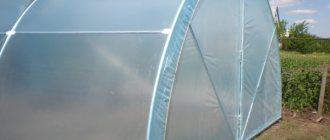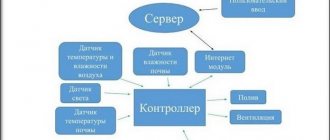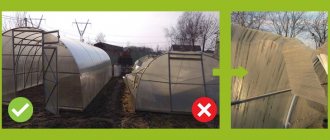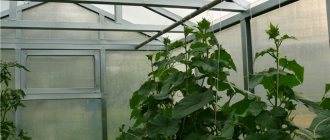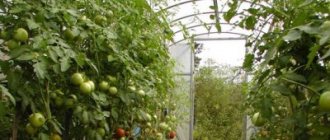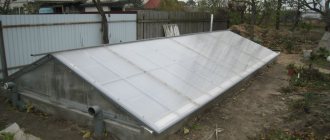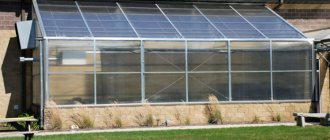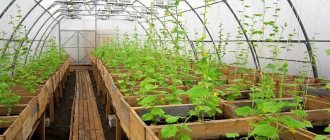Automation is omnipresent. Various mechanisms create comfortable temperature conditions, help with cooking, care for clothes, turn on and off the lights, and also keep the room clean. But their use is not limited to human life. In general, in the entire environment, on the street or in production, when transporting something, in shops or agriculture - invisible helpers work everywhere.
With the development of the technological base, the level of automation also increases. Nowadays, robots or mechanisms perform more than just a sequence of prescribed actions. Their design now allows for a kind of “choice”, depending on changed external conditions. The simplest example is a washing machine. Its internal filling detects the temperature of the water and, if necessary, heats it up, monitors the washing time and the correctness of the current execution cycles.
In addition to what has already been described, “smart” houses, cities, neighborhoods or streets have entered our lives. Their main difference from conventional ones is the presence of interconnected control systems. Each of which controls one device from those present in the complex. But the work of all of them is determined by a common system, sending information necessary for operation or indicating commands.
One of the relatively rarely used intelligent control schemes is its use in agriculture, and specifically for the complete automation of greenhouses or plant care equipment. Actually, how a smart greenhouse can be prepared and assembled using Arduino with your own hands will be described below. Even a person relatively versed in electronics can do this.
General information about control systems
The intelligence of modern equipment is provided by microcontrollers. These are small and resource-constrained full-format computers, often located on a single board or chip. Despite their small size, their power is quite sufficient to control various equipment. Such microcomputers obtain the information necessary to perform their functions through various specialized sensors. The general location of devices in a single network is ensured through additional modules attached to the microcontroller.
Carrying out their program, intelligent devices issue control pulses to executing circuits including motors, pumps, heaters or any other devices to control which the entire system is created.
The basis of many of these complexes are controllers of the Arduino, STM, Ti MSP430, Netduino, Teensy, Particle Photon, ESP8266 series or other common boards of this type in the world. In addition, some specialists create their own versions of micro-computers that control equipment based on outdated PCs or some 8-bit processors, for example, the Z80.
Let's bring it all to life with the help of the program
Growing crops in protected soil conditions involves organizing a certain microclimate indoors. Otherwise, the greenhouse not only becomes of little use, but can also cause irreparable harm to the seedlings. You can provide the plants with the necessary conditions on your own. But, automation of processes that affect the climate inside the greenhouse will be more convenient and effective. How you can automate a greenhouse using ready-made and homemade devices - read the article.
Modern automation devices for greenhouses and greenhouses allow irrigation, heating and ventilation systems to operate autonomously. Today, there are several ways to automate the processes on which it depends. Each of them has its own advantages and disadvantages.
Automation in greenhouses differs according to the principle of operation (the method of putting the mechanisms into action) into:
- Electric
. This type of automation is easy to install and allows for precise adjustment. The disadvantages of electrical systems include their high cost, compared to other types of automated systems, and dependence on a source of electricity. - Hydraulic
. Such technologies are reliable and absolutely safe: they are based on the principle of expansion of liquids when overheated. The disadvantages of the designs are their slow response to lower temperatures. - Bimetallic
. Bimetallic devices are based on the ability of different metals to expand. Such systems are ideal for automating the ventilation system. The disadvantage of bimetallic automation is that it is not capable of operating heavy equipment.
The above automatic systems can be installed on any equipment that needs autonomous operation. The choice of automated structures depends on the gardener’s budget, the presence of a power transmission network near the site, and the dimensions of the greenhouse.
What would you like
The greatest desire of any gardener is to get the maximum yield with minimal labor costs. Greenhouses are one solution to this problem. But even in this case, you want the beds in it to be watered, lit, and heated when needed. And of course, an automatic ventilation system was organized to minimize the effort of opening and closing the windows.
If this functionality is too much for you, then you can assemble automatic watering in a greenhouse with your own hands, then you won’t have to delve too deeply into programming and development.
Monitoring and configuration
Of course, first of all, a management system for all this highly intelligent enterprise is required. In addition, it is desirable to receive information about the current status directly either on a home computer or on a smartphone. For this purpose, a greenhouse controller on Arduino will be used.
Control
In accordance with your wishes, it is necessary to organize automatic control of floor heating (as the basis for heating plantings), opening of vents, and soil moistening. A lighting control system that turns it on if it's dark outside would be nice.
Greenhouse automation based on Aries automation
Purpose of a greenhouse automation system
Greenhouse management automation systems allow you to perform the following functions:
- Operational control of technological parameters and microclimate, temperature, pressure, humidity, etc. in the greenhouse;
- Archiving data on greenhouse operating parameters and presenting them in a convenient form;
- Presentation of information about ongoing processes in the elements of the greenhouse complex;
- Collection and accumulation of data for analysis, allowing us to determine the future reconstruction of the greenhouse complex.
- Two levels of lighting in the greenhouse are triggered by a light sensor.
- Control of boiler room parameters. Displays parameters (temperature, pressure, state of greenhouse actuators), as well as emergency situations, on the operator’s screen.
Monitoring the operation of greenhouse systems
Automation of the control system was carried out in the following areas of the greenhouse:
- greenhouse boiler room;
- production areas of the boiler room;
- germination area;
- ventilation and air recirculation systems;
- Co2 distribution system in the greenhouse;
- irrigation system in the greenhouse;
- fertilizer preparation system.
Structure of a working project for greenhouse automation:
- structural diagrams of the greenhouse technical equipment complex;
- greenhouse automation schemes;
- electrical circuit diagrams;
- wiring diagrams and external wiring connections.
OWEN equipment for greenhouse automation systems
- ARIES MU110-6U
- ARIES MV110-8A
- ARIES AC5
- Analog input module МВ110-pH
- ARIES BP60B-D4
- ARIES MV110-16DN
- Resistance thermal converters DTS type TSP, TSM
- Resistance thermal converter for measuring air temperature (air temperature sensor)
- ARIES MU110-16R
- ARIES PLC304
Advantages of OWEN PLC 304 controllers
- The presence of a built-in card reader allows you to expand the non-volatile (flash) memory of the controller up to 2 GB
- increased number of serial interfaces, allows you to connect a large number of equipment from different manufacturers to the controllers with support for different interfaces/communication protocols
- Built-in real time clock.
- The ability to work using any non-standard protocol on any of the ports, which allows you to connect devices with a non-standard protocol (electricity, gas, water meters, barcode readers, etc.)
- Possibility of programming controllers in the 2 most common controller programming environments: Codesys 3.x and Isagraf 5
- Possibility of programming controllers from SCADA systems with built-in softlogic package
- A set of ready-made software modules provided free of charge
Purpose of input modules, output modules, input/output modulesInput and output modules are designed to collect data from built-in discrete and analog inputs with their transmission to the network, measure the signal of a mutual inductance sensor based on a differential transformer converter, convert the measured value of mutual inductance into a physical value quantities, bridge strain gauge signals, conversion of measurement data into the value of a physical quantity and transmission of measurement results. The input and output modules also have an alarm function when the measured value deviates from the specified control zone.
The input/output device can be used to work with pressure gauges, draft gauges, pressure gauges, draft pressure gauges, vacuum gauges, pressure and vacuum gauges, differential pressure gauges, rotameters and other devices with the function of converting the measured parameter into the value of mutual inductance via differential transformer coupling. The device can be used as part of measuring systems for monitoring and controlling technological processes at industrial enterprises and housing and communal services facilities. Water and output devices of this series can be effectively used to automate the control of all equipment in a modern greenhouse.
Where can I buy
You can purchase equipment for smart greenhouses either in a specialized store or online in an online store. In the second case, the budget option for purchasing products on the Aliexpress website deserves special attention. For some products there is an option for shipment from a warehouse in the Russian Federation; they can be received as quickly as possible; to do this, when ordering, select “Delivery from the Russian Federation”:
| Automatic drive for opening Tuya window | Irrigation system with timer | Automatic watering kit for greenhouses with timer |
| Universal smart solution for remote monitoring of a greenhouse | LED grow light 1000/1500W | Smart lamp for plants with remote control |
Step-by-step instructions for creating a smart greenhouse
Almost every greenhouse that meets the standards for growing vegetables, fruits and flowers in artificial conditions can be endowed with “intelligence”. To do this you need:
- Purchase a ready-made automation kit or select equipment that corresponds to the creation of the necessary microclimate and room area.
- Optimal placement of sensors and actuators.
- Connect all elements to the controller.
- Install the necessary software.
- Provide remote control.
- Organize autonomous power supply.
One of the options for creating a smart greenhouse is presented in the video:
Recommendations for beginner gardeners
- When locating the greenhouse, the purpose, wind pattern and geographical latitude of the site are taken into account.
- Transoms for ventilation are located as high as possible.
- In the dark, temperature preservation is ensured by heat accumulators (a barrel with water heated during the day).
- No automation will ensure productivity without painstaking soil care.
Implementation in hardware
There is nothing complicated in implementing the project. It is enough to use an Arduino board, in combination with several sensors (humidity, temperature, light, filling the irrigation tank and the end contacts of the ventilation windows), as well as a pair of motors for ventilation, and install a “warm floor” system.
But first you need to make the greenhouse itself. The following model was created for the basis:
Here's a translation of it into reality:
Monitoring and configuration
Visualization of information, as well as setup menu items, are displayed on an LCD1602 display, with a converter to IIC/I2C UC-146 for connecting it to Arduino.
4 keys are used to select parameters. It is advisable to place all this together in a common control box.
In addition to visual, for remote control, the ESP8266 LoLin NodeMCU2 WIFI communication module will be used, with the help of which information using the UDP protocol will be transmitted to a home computer with a configured web server and database. Which can subsequently be accessed on any device on the shared network - smartphone, digital TV or tablet.
The module will be connected to Arduino Uno via the serial port (RX/TX). Moreover, the electrical contact is made directly TX (modem) - TX (Arduino) and RX in the same way. Why is this important? It is often recommended to make a cross RX-TX connection. This is not necessary in the attached diagram.
Watering
The irrigation system works based on physical principles and a pump that operates for a certain time. The period and beginning of which is controlled by Arduino. In the morning the tank is filled with water, which is limited by the time in the control sketch and the sensor in the attached drawing. During the day it is warmed up by air in the greenhouse. In the evening, the pump turns on briefly, which slightly overfills the container and starts watering by gravity.
This is what it looks like in reality (together with the water supply system to the beds):
Its working scheme:
At night, the tank stands empty so that if the heating is turned off and the air temperature drops below zero, it will not be broken by frozen water.
Heating
Heating of the ground is done by pre-laying a “warm” floor under future beds. The switching occurs through a special 30 A relay, since the power generated by the Arduino would never be enough to power such a consumer.
In addition to it, a regular household warm air blower is used, which allows you to heat the interior of the greenhouse. It also connects to the microcontroller.
Ventilation
To ensure air movement, there are two rotary windows, the opening and closing process of which is carried out by motors from car wipers. In turn, connected to Arduino.
Lighting
To provide plants with a constant flow of light, Chinese LED strips are used, which turn on depending on the timer and light level.
In the diagram below, it is connected to the reserve (lighting) terminals.
Control circuit
And of course, the most important part is the schematic diagram of the “brains” of this entire structure.
A small note: the Arduino relay does not have enough power for heaters (air and soil). In addition to them, current, high-ampere options are used as intermediaries, connected directly to consumers.
We automate in a cunning way and using home remedies
Let's see how we can provide the same automatic watering to plants using improvised means:
Method No. 1. Solar distillation
This is a very simple method of automatic watering, which provides enough moisture for plants even on the hottest days. The essence of this principle is solar distillation - when water is heated until steam is released, and this steam is then condensed into water.
So, we take two plastic bottles of different sizes, pour water into one of them, and use the second as a cap for it. When the water from the sun evaporates, the steam will settle on the walls of the hood. This condensation moisturizes the soil well, and the hotter the sun, the more moisture the plants will receive.
Method No. 2. Pen refill
You can make the simplest and free drip irrigation devices from ordinary plastic bottles and refills from old ballpoint pens. Wash the rods with gasoline to remove the paste and close one end tightly with a wooden stick. Using a sewing needle, poke a hole 3-4 mm from the plug. Punch a hole in the bottle too - only a little smaller in diameter than the rod.
And place the bottles like this:
- Option 1. Cut off the bottom of the bottle and make a hole for the rod at the level of the hanger. Close the neck with a cork and place the bottle upside down.
- Option 2. Make a hole at a distance of 20-25 mm from the very bottom, remove the cap, and place the bottle on the bottom. Seal the hole with plasticine.
That's all. Pour water and watch how it drips from the rod - normally 10 drops should flow out in 5 minutes.
As you noticed, automatic watering and humidity control are really not problematic, but you will have to tinker with ventilation. The most reliable and simplest option is to buy automatic window openers. But, if you wish, you can make these yourself. To do this, look at our website for articles on the following topics: how to make a hydraulic cylinder or thermal drive. But the essence of all these designs is the same: the oil or other liquid in them expands as the temperature rises and pushes the piston out. This, in turn, puts pressure on the next structural element and the window slowly begins to open. An interesting moment: when the transoms in a “smart” greenhouse barely begin to rise, the neighbors of the happy owner also begin to run to their greenhouses to ventilate. This is such a sensor for others.
Of course, not a single automatic greenhouse will do your work 100% for you, but still, it’s nice to be freed as much as possible from routine and “dancing with a tambourine,” as Russian masters like to say today. And this is additional time for new experiments!
{SOURCE}
voice
Article rating
Software part
Everything is clear with the equipment. It remains to deal with the programs that manage it and control the state of the entire system. Since the complex contains two highly intelligent devices - ESS8266 and Arduino itself. Accordingly, both need their own programs. Placing them in the device memory, in both cases, is done through the Arduino IDE.
Monitoring
A sketch that needs to be uploaded to the ESP8266 LoLin NodeMCU to ensure its communication with the Arduino and WiFi router.
Control
And finally, a large sketch of controlling the greenhouse itself, which is uploaded to Arduino.
Design Notes
It is advisable to replace the DN11 sensor with a DN22, which, although more expensive, is more accurate and functions without the problems inherent in its younger namesake. To power the control circuits, you can use a computer power supply, preferably an AT form factor.
We recommend reading: follow the link if you want to learn how to connect a soil moisture sensor to Arduino.
Air temperature
If tomatoes and cucumbers grow in a greenhouse, then the environmental parameters for these crops are similar. Tomatoes feel good at air temperatures from +18 to +25°C during the day and not lower than +16°C at night. Soil temperature from +10°C and above. For flowering and fruiting, the temperature can be increased slightly so that the fruits ripen faster and are larger. At night, substances from the leaves go to the fruits. If the temperature is increased, the fruit will fill more actively. If the temperature is in the lower limits, then this promotes the growth of shoots and roots - for prolonged fruiting.
To maintain the desired temperature in the greenhouse, it is necessary to take into account seasonal temperature fluctuations in the area where the greenhouse is located. If this is the southern part of Russia, then you can focus on automatically lowering the temperature, and if it is the northern part of Russia, then you will also have to take care of the heaters.
So I’ll start with ways to lower the temperature in a greenhouse. The easiest way to lower the temperature in a greenhouse is to create ventilation. For ventilation, “actuators” are used, which open the vents when the temperature rises.
There are autonomous “oil ventilators” - the essence of their work is simple: when the air temperature rises, the hydraulic oil expands and pushes the rod, thereby opening the vent. When the temperature drops, it closes without any automation. But there are also problems with them, the first problem is that if the air temperature is elevated and a cyclone suddenly passes by with increased wind, the window may simply not have time to close and it may be torn off by strong wind currents. Well, the second problem is cylinder leakage, but this can be noticed in time.
Actuators for greenhouses
I still decided to make the ventilation more intelligent. Stores sell linear actuators that can be used to open and close vents according to specified conditions. Because the automation always works, then the ventilation can be connected to the general system, because The actuator costs no more than a hydraulic cylinder and has much more possibilities. In combination with a wind sensor, an atmospheric pressure sensor and a temperature sensor, you can expand the capabilities of your greenhouse. For example, an atmospheric pressure sensor can monitor pressure changes, because it has long been known that when atmospheric pressure drops quickly, strong winds are more likely to pass through, and the wind speed sensor will definitely show that all the windows should be closed.
Advantages of using automated greenhouses and greenhouses
For some gardeners, buying an automated greenhouse seems like an unjustified waste of money, but practice has shown that investments pay off during the first season of using a greenhouse with automation. It has been proven that the use of automation in greenhouse farming helps to significantly facilitate work at a summer cottage and reduce resource consumption. The use of automation in greenhouses allows:
- Reduce water and electricity consumption;
- Optimal dose of fertilizers;
- Harvest several times throughout the year;
- Increase the yield of vegetable and berry crops.
The disadvantages of this equipment are often its high price, but savings on water, electricity and labor costs will help quickly pay for the product. In addition, a wide selection of ready-made automated greenhouses allows you to choose a model that exactly matches the tasks and needs of the gardener.
It is important to remember that following the rules of agricultural technology will also help to grow a good harvest. It is necessary to select high-quality, viable planting material and ensure proper systematic care of the plant - regular removal of excess inflorescences, timely harvesting, and protection of plantings from pests. In this case, gardening can become not only a favorite hobby, but also a business that brings in a stable income.

